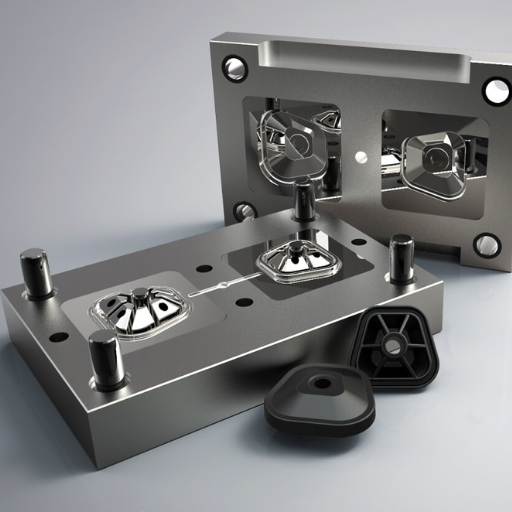Speed Meets Precision: Mastering the Art of Rapid Injection Molding
In today's fast-paced manufacturing landscape, the demand for quick turnaround times without compromising quality is more critical than ever. Rapid injection molding has emerged as a game-changing technique that allows businesses to accelerate their production processes while maintaining the precision necessary for high-quality components. This innovative approach utilizes advanced technology to produce molds swiftly, effectively bridging the gap between concept and final product in record time.
As industries evolve and competition intensifies, mastering the art of rapid injection molding becomes essential for manufacturers looking to stay ahead. This technique not only streamlines production but also enhances design flexibility, allowing for prototypes and small-batch productions to be completed in a fraction of the time traditional methods would require. Understanding the intricacies of rapid injection molding can empower companies to optimize their operations and respond quickly to market demands, all while ensuring that precision is never sacrificed.
The Fundamentals of Rapid Injection Molding
Rapid injection molding is a manufacturing process designed for speed and efficiency, making it ideal for prototyping and small-scale production. This technique utilizes specialized molds that can be produced quickly, allowing manufacturers to create high-quality plastic parts in a fraction of the time required by traditional methods. The ability to rapidly produce molds significantly reduces lead times and costs, enabling companies to bring their products to market faster.
One of the key advantages of rapid injection molding is its flexibility in design and material selection. Engineers can work with a variety of thermoplastics to meet specific application requirements, ensuring that the final products exhibit desired characteristics such as strength, durability, and thermal resistance. This adaptability not only benefits product development but also enhances the overall efficiency of the manufacturing process.
Moreover, rapid injection molding is beneficial for iterative design processes. When modifications or adjustments are needed, the quick turnaround of molds allows for immediate testing and refinement of designs. This iterative capability accelerates the product development cycle, allowing teams to innovate and respond to market demands with greater agility. As a result, companies can continuously improve their offerings while minimizing downtime and production costs.
Advantages of Rapid Injection Molding
Rapid injection molding offers significant time savings in the product development cycle. By utilizing efficient mold design and manufacturing techniques, companies can produce high-quality prototypes and production parts in a fraction of the time compared to traditional methods. This speed allows businesses to respond quickly to market demands, accelerate testing processes, and reduce the overall time it takes to bring a product from concept to market.
Cost efficiency is another major advantage of rapid injection molding. While the initial investment in tooling may be higher for traditional injection molding, rapid injection molding often reduces material waste and lowers production costs over time. The ability to quickly produce small runs of parts minimizes holding costs and inventory risks, allowing companies to be flexible and adapt to changes in consumer preferences without incurring significant financial burdens.
Finally, the versatility of rapid injection molding facilitates the creation of complex geometries and intricate designs that are often challenging to achieve with traditional molding techniques. This flexibility empowers designers and engineers to innovate and explore new possibilities for product design, while also ensuring that the final products meet stringent quality and performance standards. By embracing rapid injection molding, companies can harness creativity and production efficiency simultaneously.
Key Technologies Driving Efficiency
One of the critical technologies enhancing rapid injection molding is advanced computer-aided design (CAD) software. This software allows engineers to create detailed 3D models of parts, enabling precise adjustments to be made before the mold is even produced. By simulating the molding process virtually, manufacturers can identify potential issues and optimize design parameters, such as wall thickness and gate locations, to ensure efficient production. This not only shortens the design cycle but also reduces waste, as adjustments can be made digitally rather than through physical prototypes.
Another significant advancement is the use of high-performance materials in conjunction with state-of-the-art molding machines. These machines are designed for rapid cycling and often incorporate features like servo-driven movements, which provide greater control and speed during the injection process. Using innovative materials capable of withstanding higher temperatures and pressures allows for faster cooling times, further increasing overall efficiency. This combination of machine capabilities and material science is essential for meeting the high demands of rapid injection molding applications.
Finally, automation plays a vital role in optimizing the rapid injection molding process. Integrating robotic systems and automated quality control measures into the workflow allows for consistent product quality while maintaining high production rates. Automation reduces reliance on manual labor, minimizing human error and enabling factories to operate continuously, maximizing throughput. As technology continues to evolve, the integration of advanced automation will further propel the efficiency and effectiveness of rapid injection molding , keeping pace with market demands.
